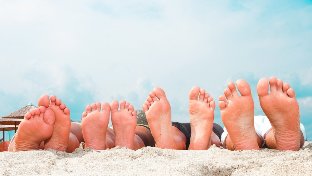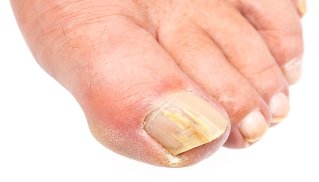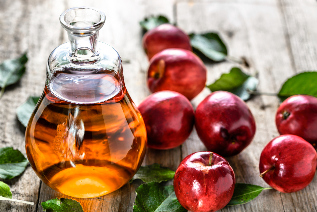Fungal infections (mycoses) include dermatology are the most common. The infection of the pathogen is possible in several ways, and mild symptoms of the disease at an early stage of its development, not all patients in time to get you to go to the doctor. The result of the pathological process covers the whole of the greater part of the limbs (mostly the legs) and spread deeper into the tissues. Running foot fungus is treatable, but in order to fully fight the infection, sometimes it takes months of hard treatment.

Causes of foot fungus
The fungus develops as a result of penetration under the skin layers of the spores of pathogenic micro-organisms. Lose only the skin is called dermatomycoses, destruction of the nail plates under the action of the fungus is onychomycosis.
The infection of the pathogen occurs in two ways – direct and indirect. In the first case, the fungal spores can remain in the soil tiles, wooden surface. The second the infection is transmitted by personal items – washcloths, Slippers, towels, manicure instruments.
Fungal micro-organisms, for a long time remain viable in warm, moist places, that is why the infection often occurs in swimming pools, beaches, sauna, gym and sauna.
The risk of penetration of the micro-skin is significantly if the foot are hairline fractures – abrasions, scratches, blisters. Susceptibility to the fungus grew under the influence of a predisposing disease factors:
- reduces the body's resistance, is an inadequate immune system;
- non-compliance with hygienic standards;
- sweating;
- diseases of the endocrine system, which perform metabolic disorders. Fungal infections characteristic of patients with diabetes;
- violation of blood circulation in the lower extremities, which may be associated with vascular diseases or deformities of the foot;
- wearing tight, poorly ventilated shoes. Legs, in such circumstances, constantly sweating, there are scuffs and abrasions, which is suitable for reproduction of the fungus of environment;
- age. Fungal infection is common in children and the elderly, these categories of patients the skin is thin and its protective properties are reduced, which creates conditions for the ingress of infection.
- excessive dryness of the skin. Hydrated skin is the surface of a lipid membrane, which prevents the penetration of pathogenic micro-organisms. Increased drought no such protection, which allows fungal spores to penetrate easily inside.
The likelihood of developing a fungal infection is much higher if the body is exposed to several predisposing disease factors.
A variety of fungal
Illness depending on the type of fungus is classified into:
- the athlete's foot. Called flexible Trichophytonmcntagrophytes;
- it rubrofitii. Found in 70% of cases of athlete's foot.
Depending on the localization of the pathological process, there are:
- fungal infection between the toes (chromophytosis). This files most often form of intertriginous (acute) fungal infection;
- plantar athlete's foot. The main symptom of peeling skin, which, if the disease goes actinic;
- skin stop. The pathological process begins with the formation of lesions, similar to the form of allergic reactions;
- deep forms of mycosis. The infection affects the superficial and deep layers of the skin stop;
- onychomycosis – fungal infection of the nail plate. Rarely occurs isolated, in most cases, is a complication of plantar superficial mycoses.

Symptoms of pathology
Early stages of the disease occur frequently removed signs. Appearance of scaly patches on the skin mild redness and itching is often not taken seriously, and the use of various topical treatments, the itching and inflammation and reduce the symptoms, but the fungus does not die. That is, the infection develops and gradually becomes chronic. Symptoms depend on the form of the disease and its duration.
- form the interdigital mycosis characterized by the appearance of redness and burning between the toes. Inflammatory process, infection, rarely extends to the toe facilities. As a rule, the symptoms disappear in the winter and in the summer during the compounding;
- fungal infection occurs, peeling of the skin and redness in certain areas of the foot. Sometimes there is severe itching;
- hyperkeratotic form. Characterized by the formation of watery papules or plaques with a bluish color with a rough surface. Individual pockets and to combine, on the heels of the cracks;
- disgidroticheskaya form. The main characters – the emergence of a large number of watery blisters, which eventually open to, and in their place are ulcers. At a later stage, this disease is often confused with the rash.
- onychomycosis is manifested in the color change of the nail plate, the appearance is dark or bright dots and stripes and stratification of the nail and thickening.
The appearance of burning, redness, flaking, itching in the feet and legs should as soon as possible to consult a doctor. In the early stage of the disease is easily treatable external means.
Diagnosis
Suspected fungal infection, you need to consult a dermatologist. An experienced physician selected on the basis of the patient and examination set the diagnosis. But to confirm, and what kind of pathogen the necessary laboratory tests. Their implementation allows to set the type of micro-organism, which requires real treatment.
Treatments
Medical therapy is chosen based on the stage of the disease, the patient's age, other diseases and complications. Treatment should be comprehensive, it consists of a external and systemic medications, traditional methods.
In addition, your doctor may prescribe a multi-vitamin complexes, they improve the immune system. Severe itching in the acute stage of the disease, relieves irritation, helps antihistamines. When you join secondary infection requires treatment with antibiotics.
The fungus, you need to remove and personal items. First you have to deal with the shoes with disinfectant, and is better to completely replace it with a new one.
After the detection, the infection can forget that most likely infected with fungus and other family members. In order to restore you need to use your own personal hygiene products, towels and Slippers. Fungal spores are destroyed at very high temperatures, so the need to iron underwear and bed clothes, and even socks.
Local agent
Local antifungal agents – ointments, gels, emulsions and solutions. As an external medication affects the skin of the feet after the treatment. It's enough to make a foot bath with potassium permanganate, soda or soap. The procedure time is 15 minutes after the skin is dry and apply the designated institution.
Onychomycosis before the cream or solution is to remove the top of the affected nail. The nail plate is softened using a special keratolytic remedies. If this is not done, then parts of lotions does not belong to the lower layers of the nail, i.e. where the growing fungus colony.
With the defeat of the nail system of the fungus is sometimes necessary to drink for 12 months or more. System medication to patients as prescribed by the doctor.

Folk remedies
How to get rid of foot fungus at home? You need to remember that the use of all kinds of "grandma's recipes" the most important treatment to ensure that the infection is subsiding, but not completely disappear. This leads to the fact that the fungus over time, re-aktiviziruyutsya. So the traditional antifungal drugs should be combined with medical treatment.
To overcome the fungal infection, you can stop using the trays, prepare the creams, the rubbing.
- antifungal properties is baths with salt, soda and soap. 5 liters of hot water you need to take 2 tablespoons of salt and soda, RUB in the solution of a quarter piece of soap. This water foot stand for half an hour, then dried and applied to the skin and nail fungus medication;
- toes and fungus damage in the feet can be greased with birch tar. The procedure is best done at night, on foot, wear clean socks;
- Apple cider vinegar is mixed in equal quantity of alcoholic solution of iodine. In the resulting liquid to moisten the swab and lubricate them affected areas of the foot;
- the garlic oil. Garlic cloves should be crushed to a pulp and combine with butter or lard. The resulting ointment is used to treat stop.
Fungus treatment on legs folk ways is a couple weeks in a row. It is desirable to periodically exchange funds, it increases the effectiveness of therapy.
The risk of infection
To prevent infection, it is not always possible. But you can reduce the risk of infection of fungal pathogens to a minimum. You must comply with the following rules.
- In the general places where need indoor shoes, to take only his.
- Don't use other people's personal hygiene items.
- Formed in the leg abrasions, calluses and abrasions are treated immediately.
- Use only high-quality, well-ventilated shoes.
- Always follow the rules of hygiene.
The probability of infection is reduced, when the good work of the immune system. Improve the condition of the protective force to help rational nutrition, vitamin therapy, hardening. Need and treat all chronic diseases.
Conclusion
Nail fungus is not dangerous, but very unpleasant, because its manifestations and consequences of the pathology. To cope with the infection with the help of modern medicines can be just a few days, but on one condition – timely treatment to the doctor.





























